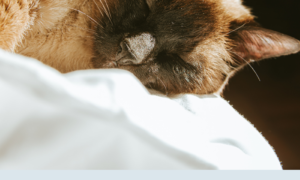Cats are no different from us when it comes to itchy, dry skin during winter months. Air gets  drier as temperatures drop and furnaces run, resulting in itchy, flaky, dry skin. The most obvious symptoms of seasonally-related skin conditions in cats include:
drier as temperatures drop and furnaces run, resulting in itchy, flaky, dry skin. The most obvious symptoms of seasonally-related skin conditions in cats include:
- Dry, flaky skin
- Scratching, licking and/or chewing, especially around the neck and face
- Loss of sheen and coarse coat appearance
- Loss of fur
- Cracked or red skin
There are things you can do to relieve skin conditions in cats. To help your cat cope with seasonally-related dry skin you can:
- Add humidity to the air using a furnace-mounted humidifier or room humidifier.
- Brush your cat. Brushing stimulates natural oil secretion in a cat’s skin and disburses the oil from the fur down to the skin.
- Try to avoid bathing cats as much as possible during the winter, and when you do, use a moisturizing shampoo and conditioner. Some recommend adding Omega 3 Fatty Acids, Cod Liver Oil, or herbal homeopathic remedies to a cat’s diet. This writer uses a leave-in moisturizing spray on her cats.
Since a cat’s coat is a reflection of her overall health and because cats are experts at covering up health problems, it’s important to contact your veterinarian if you suspect more serious problems. Itching and dry skin can be symptoms of various allergies, external parasites, fungal or bacterial infections, tumors, stress, or adverse reactions to things they come across in their environment.






